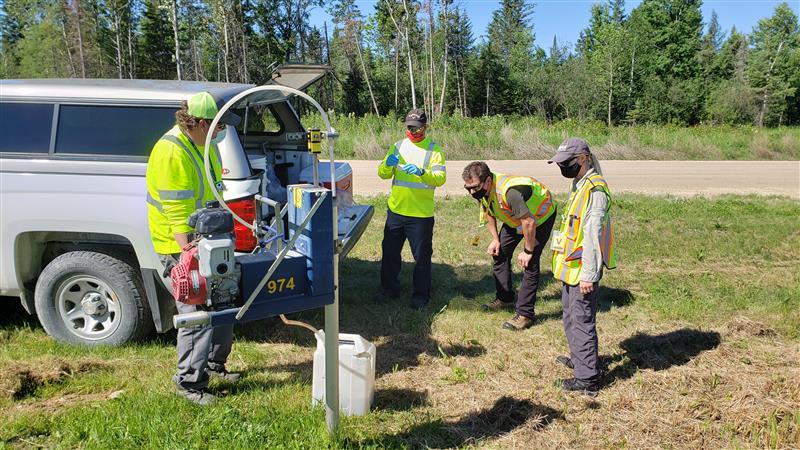Protecting Lands
“ The Whiteshell Laboratories site is part of a much larger community “
The Whiteshell Laboratories (WL) site and surrounding areas are a community of forests, mammals, fish, reptiles, birds, lakes, wetlands, rivers, and streams. All members of this community are intricately linked and dependent on one another. CNL’s team is working on and surrounded by Treaty 1, 3 and 5 lands and the homeland of the Red River Métis. These lands are valued for their ecological, recreational, spiritual and cultural importance.
Taking care of the environment is one of the most important activities carried out on-site. To date, all results confirm that the public and the environment in the vicinity of Whiteshell Laboratories are protected and that there are no expected health impacts. Regular testing includes:
- Sampling of water, sediment, and fish in the Winnipeg River (upstream, downstream, and across the river)
- Surface water from ditches
- Water from on-site wells
- Soil samples on-site and nearby farms/land
- Country foods (berries, mushrooms, wild rice)
- Garden produce near site
- Wild game killed in road collisions
- Ambient/background radiation
All environmental data is tracked and reported in the three Annual Compliance Monitoring Reports. The reports are written every year and are available to the public. In 2023, CNL also developed a short 2023 Whiteshell Laboratories Environmental Monitoring Report summarizing key findings.
As mentioned earlier, for several years, CNL has invited people from Sagkeeng First Nation, Black River and Hollow Water First Nations, and citizens of the Red River Métis to join in environmental testing activities. We want to adapt the way we do things to best incorporate Indigenous knowledge and build trust when it comes to our role in protecting the environment.
This community of plants, animals, and people is where we call home. We are fortunate to be a part of this beautiful and ancient community and take our duty to protect it very seriously.


INDIGENOUS PEOPLE
Indigenous people are stewards of the land and water which all living things depend. We conduct our work on traditional Treaty 3 Territory which is the traditional lands of the Ojibwa and Salteaux peoples and Treaty 1 Territory which is the traditional lands of the Anishinaabe (Ojibway), Ininew (Cree), Dene and Dakota. These lands are also on the Homeland of the Red River Métis.
WATER RESOURCES
Our communities depend on the Winnipeg River, and its connecting streams and wetlands. Clean water is essential for life. Lakes, rivers and wetlands provide raw materials, recreation, and important cultural value.

BLACK BEARS
Black bears, like many mammals, affect the presence and populations of other species, and promote forest growth. The presence of black bears is an indication of reasonably functioning terrestrial and watershed ecosystems. A landscape that can support the habitat requirements of one of the largest terrestrial omnivores can support a variety of other plant and animal species.
RECREATION AND TOURISM
Recreation and tourism in the community thrives on opportunities to experience nature in the Whiteshell. Ecotourism, wildlife viewing, sport fishing, swimming and boating depend on healthy rivers and forests to be successful. Participants in nature-related activities in Manitoba spent $1.3 billion on nature-related activities and services annually.*
*Provincial, and Territorial Governments of Canada. 2014. 2012 Canadian Nature Survey: Awareness, participation, and expenditures in nature-based recreation, conservation, and subsistence activities. Ottawa, ON: Canadian Councils of Resource Ministers
CNL WORKERS
CNL workers are required to follow the Whiteshell Environmental Protection Program requirements in order to practice responsible stewardship for future generations in this community. The program is a shared responsibility of all employees.
You can read CNL’s Performance Reports here.


